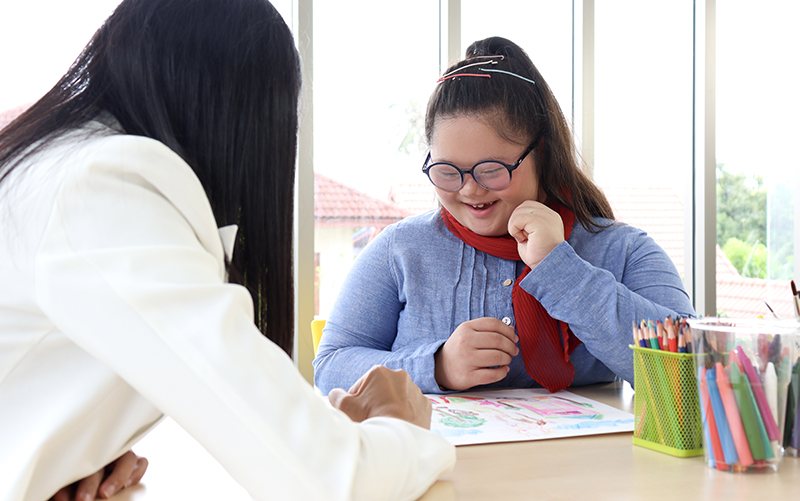
The Kids Research Institute Australia researchers have called for a greater focus on creating opportunities for children with disability to participate in the community, after finding a clear link between participation and better quality of life.
In a study published in Developmental Medicine & Child Neurology, researchers led by Associate Professor Jenny Downs examined the experiences of 435 children with a range of disabilities – including intellectual disability, autism, cerebral palsy, Down syndrome and Rett syndrome – to explore the influences of functional skills and community participation on quality of life.
“Children with disability live with a range of difficulties in motor, communication and social functioning and in their ability to independently manage the activities of daily living – what we call functional skills,” Associate Professor Downs said.
“We wanted to better understand the relationship between the level of functional skills and quality of life, and also whether simple interventions like community participation – something most people take for granted but which may be less readily available to children with disability – could make a difference to that child’s quality of life.”
Participation refers to meaningful involvement in life situations in the home, at school and in the community, which provide opportunities to develop functional skills, connect with others, develop independence, and engage in enjoyable and meaningful activities.
Caregivers of children in the study completed questionnaires about their child’s functioning, frequency of community participation, and quality of life – which takes into account aspects of health and social and emotional wellbeing. The researchers calculated a quality of life score out of 100 for each participant.
The average quality of life score was 69 out of 100, with children who had more impaired functional skills tending to experience a lower quality of life.
However, the researchers found participants with higher levels of community participation – at least once a week compared with only a few times in a few months – had quality of life scores that were up to nine points higher.
“Most children had participated in the community a few times over the past few months. Very few children were doing weekly participation, but those children who did more had noticeably higher scores – and that was irrespective of their functioning,” Associate Professor Downs said.
“So more frequent participation was associated with higher quality of life overall, even for children with poorer functioning.
“While these findings may seem to be common sense, what we’ve been able to do for the first time is to actually quantify the difference this kind of intervention can make to quality of life.”
Associate Professor Downs said it was important to identify and demonstrate the value of modifiable factors such as participation so that services supporting families of children with disability could achieve the best possible outcomes, and so that funding could be directed to accomplish this.
“Our results provide evidence that supporting children with disability to participate more frequently in social and recreational activities that are fun and interesting is absolutely worthwhile,” she said.
“These kinds of activities can contribute to the development of emotional wellbeing and social networks and are particularly important to counter social isolation that many children experience.”
Associate Professor Downs said participation interventions which were tailored appropriately for a child’s interests and level of disability could include sport, recreation, or arts-based activities. They should also include opportunities for the child’s choice, control, and personal engagement.
“We know, too, that participation of children with disability in the community doesn’t just benefit those children and their families, but the whole community,” she said. “Children with disability make extremely important contributions to society as a whole.”
